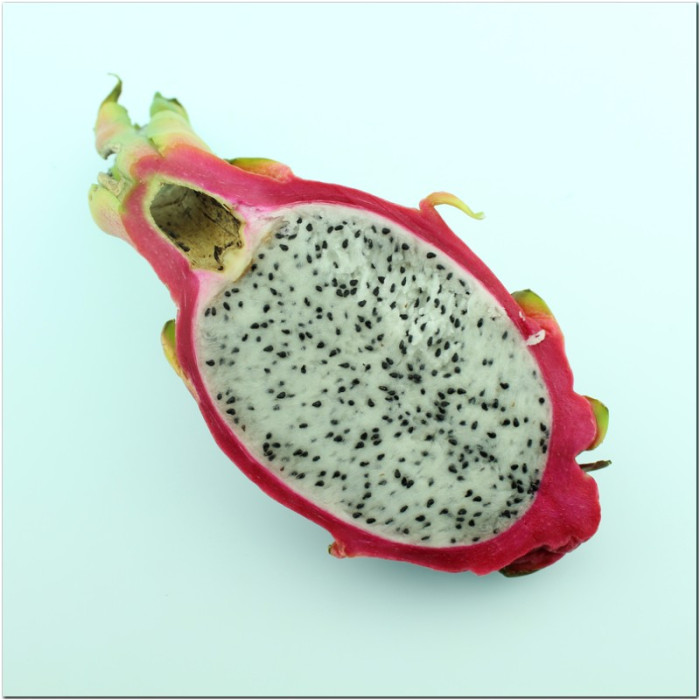Pitahaya or dragon fruit / Hylocereus undatus
Crawling lianoid cactus, has a taste reminiscent of a combination of kiwi with watermelon, although it causes different associations for everyone, the pulp is creamy, with a very delicate taste and aroma, rich in vitamins B, C, iron, calcium, phosphorus.
Red pitahaya has a taste reminiscent of a combination of kiwi and watermelon, although it causes different associations for everyone.
Fruit weight reaches 150-500 grams. The pulp is creamy, with a very delicate taste and aroma. The pulp contains many small seeds.
Pitahaya flesh is eaten fresh and also made into juice and wine. When chilled, pitahaya has a richer taste, but it is better not to combine it with foods and dishes that have a sharp and spicy taste. Pitahaya is eaten by cutting it into two halves, and then either cutting into slices, like a watermelon, or scooping out the pulp with a spoon.
The pulp of the fruit is rich in vitamins of groups B, C, iron, calcium, phosphorus and is 90% water. Pitahaya pulp is believed to be able to lower blood sugar levels. Also, this fruit is useful for people who are overweight and just want to lose weight, as it is low in calories and nutritious at the same time.
As containers for sprouting homemade pitahaya, it is better to use seedling pots with large drainage holes, or a one-piece flat tray of medium depth. The soil for germination should be a mixture in equal parts of peat, sand, perlite or vermiculite. Dragon fruit seeds are sown evenly over the entire surface of the soil, sprinkled on top with a minimum layer of the mixture, sufficient only to cover the seeds.
Watering planted seeds should be carried out carefully using a sprayer and a small amount of water. When the surface of the soil dries up, watering must be repeated. To organize a humid microclimate, the container must be covered with transparent polyethylene, but at the same time, ventilation should be carried out twice a day. It is desirable to maintain the air temperature during the germination of pitahaya within 22-25 degrees Celsius.
Fresh pitahaya seeds should germinate within 2-3 weeks. When the first sprouts appear, the shelter must be removed, and the pots placed in a well-lit place by the window, but not under direct sunlight. If weather conditions allow, then for rearing, homemade pitahaya can be moved outdoors outdoors in partial shade.
Conditions for growing pitahaya at home
Grown up cacti can be transplanted into separate pots of small volume. And as the pitahaya grows, it needs to be transplanted into a larger dwelling. As a soil, use a mixture for cacti, or flower soil with the addition of 1/3 of the sand. An adult Hylocereus is able to absorb the maximum amount of sunlight that you can give it. Therefore, feel free to allocate the southernmost window for growing pitahaya at home.
Pitahaya can painlessly endure a drop in air temperature to 0 degrees Celsius, so it can be left for the winter on an insulated balcony along with other cacti and subtropical trees. In the summer months, the optimum air temperature for home-grown pitahaya is considered to be up to 27 degrees Celsius.
Like other dragon cacti, the fruit is drought tolerant and requires little to no watering during the cold winter months. Overflow is critical with further stagnation of water and souring of the soil. In this case, to save the pitahaya, a transplant will be required with a complete replacement of the soil and the removal of rotten roots. The best way to water is to use a small amount of water, enough to soak the soil in the pot at least half. Watering should be carried out when the top two centimeters of soil are dry, about once a week.

No questions about this product, be the first and ask your question.



























